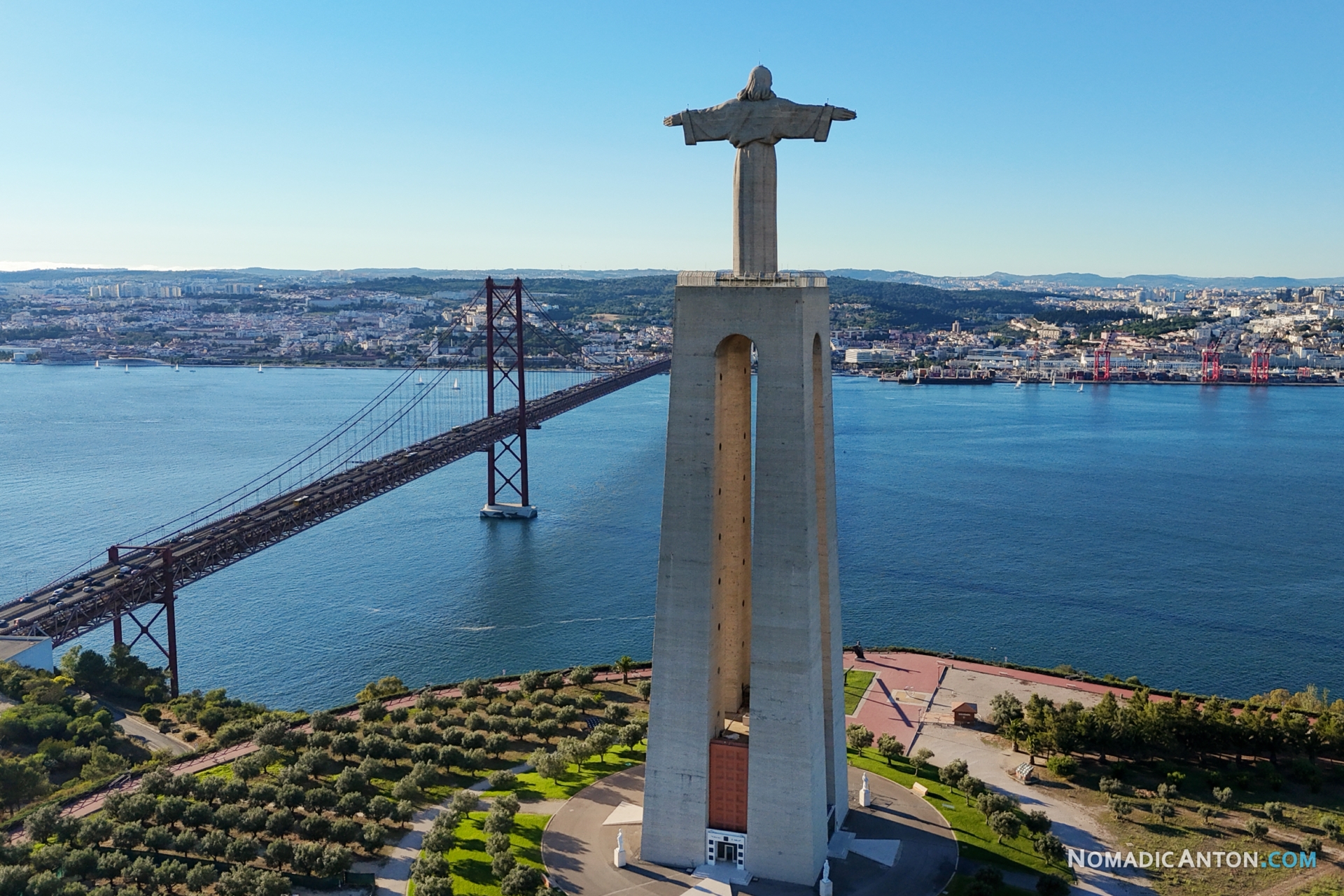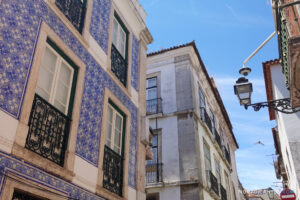
My journey to Lisbon began with a scenic train ride from Porto, marking my first time visiting Portugal’s vibrant capital. As a first-time visitor, I was filled with excitement to explore everything this city has to offer, from its rich history and stunning architecture to its coastal views and lively neighborhoods. This blog post is all about my experience discovering Lisbon for the first time – the must-see sights, hidden gems, and unforgettable moments that made my trip memorable. Whether you’re planning your own visit or just curious about what makes Lisbon special, I hope my insights will inspire you to explore this incredible city.

Lisbon is a city with a rich and complex history. As one of the oldest cities in Western Europe, Lisbon has played a key role throughout the centuries, particularly during the Age of Discovery. In the 15th and 16th centuries, Portuguese explorers set sail from Lisbon’s harbors, opening trade routes to Africa, Asia, and beyond, solidifying the city’s reputation as a hub for explorers.
Today, Lisbon reflects its glorious past while embracing a modern and vibrant culture. Its narrow cobblestone streets are filled with traditional Fado music, and its seven hills provide sweeping views of the city and the Tagus River. From its historical neighborhoods to its contemporary art museums, Lisbon offers a blend of old and new that’s hard to resist.

I usually avoid Airbnbs, but for this trip, I made an exception. Given that hotel prices were steep for the dates I chose, I opted for a rented apartment on Rua da Condessa, a small street near the bustling Rossio train station. The location was ideal, putting me right in the heart of Lisbon’s old town. However, my experience left much to be desired.
During my five-night stay, the apartment wasn’t serviced properly – no fresh towels, no bed linen changes, and minimal cleaning, which was done only once. Like many Airbnbs, I had to take out the trash myself, which meant carrying the garbage down the street. To make matters worse, I had to drag my luggage to a storage facility after checking out. All in all, I wouldn’t recommend such Airbnb if you’re looking for a hassle-free stay.
Even though I had some minor accommodation issues, they were quickly forgotten as I immersed myself in the beauty of Lisbon. Here’s a look at the attractions I visited and what I enjoyed (or didn’t enjoy) about each one.
After dropping my bags, I kicked off my trip with a tuk-tuk tour, just like I did in Porto. It’s one of the best ways to get familiar with the city, especially for first-time visitors. My guide was a local who shared stories about Lisbon’s neighborhoods, historical landmarks, and cultural aspects as we went through the narrow streets. We passed by many districts, and several scenic viewpoints, providing a perfect introduction to the city.

One of the most unique experiences I had was “Lisbon Under the Stars,” an immersive video mapping show set in the ruins of the Carmo Convent. This 360-degree spectacle tells Lisbon’s story, from Roman times to the present day, through stunning visuals and sound. It was an amazing way to learn about the city’s history in an interactive and engaging way.

Praça do Comércio, also known as Terreiro do Paço, is one of Lisbon’s most iconic squares. Located by the Tagus River, this historic square served as the city’s main gateway during the Age of Discoveries. With its grand yellow buildings and the impressive Arco da Rua Augusta, it’s a stunning place to relax and enjoy the vibrant atmosphere. There are plenty of restaurants and shops to explore, and from here, you can easily stroll to the waterfront or venture into the charming streets of the Alfama district.

On a rainy morning, I decided to visit the Oceanário de Lisboa, one of the largest aquariums in the world. While it was a good way to escape the rain, I found it a bit underwhelming compared to other aquariums I’ve visited. It felt a little outdated, though it’s a solid attraction for families with kids.

The weather cleared up in the afternoon, so I hopped on a suburban train to Sintra, a picturesque town just outside Lisbon. The highlight of Sintra is the Pena Palace, a fairytale castle that blends a variety of architectural styles, including Gothic, Renaissance, and Moorish influences. The vibrant colors of the palace, perched high on a hill, made for one of the most breathtaking sights of my trip.

I decided to visit the MAAT (Museum of Art, Architecture, and Technology) because I had seen stunning pictures of the nearby Ponte 25 de Abril bridge online, and I wanted to see it in person. The museum itself is an architectural masterpiece, with its sleek, wave-like design blending seamlessly into the waterfront. Though the contemporary art exhibitions were intriguing, the real highlight for me was the museum’s rooftop. It offers some of the best views of the iconic bridge and the Tagus River, making it a perfect spot for photography lovers. If you’re into modern architecture and great views, MAAT is definitely worth a visit.

Located in the Belém district, the Tower of Belém is one of Lisbon’s most iconic landmarks. This 16th-century fortress was built to guard the entrance to the city’s harbor and is now recognized as a UNESCO World Heritage site. The tower’s intricate Manueline architectural style is a symbol of Portugal’s Age of Discovery. Climbing to the top offers spectacular views of the Tagus River, and it’s a must-visit for anyone interested in Lisbon’s history.

If you’re looking to escape the hustle and bustle of Lisbon for a day, the coastal town of Cascais is the perfect retreat. Known for its beautiful beaches, upscale shops, and charming streets, Cascais has long been a favorite among locals and tourists alike. I spent an afternoon wandering through its picturesque marina, enjoying the vibrant atmosphere, and relaxing by the sea. It’s also home to some of the best seafood restaurants in the region.
A short drive from Cascais takes you to Cabo da Roca, the westernmost point of mainland Europe. Standing on the edge of the dramatic cliffs, with the Atlantic Ocean stretching endlessly before you, is an inspiring experience. It’s easy to see why this spot is so popular with tourists – it offers stunning views and a feeling of standing at the edge of the world. Make sure to bring a jacket, as the winds can be quite strong and cold even in the summer!
On the opposite side of the river, you will find the impressive Cristo Rei statue, reminiscent of Rio’s famous Christ the Redeemer. Standing 82 meters tall, the statue was built to express gratitude for Portugal being spared from the horrors of World War II. For a small fee, visitors can take an elevator to the top for panoramic views of Lisbon, the Ponte 25 de Abril, and the surrounding areas. It’s a peaceful place to admire the beauty of the city.

Lisbon is known for its diverse and charming neighborhoods, each offering something unique. Alfama, the oldest district in Lisbon, is famous for its narrow alleys and Fado music. Bairro Alto is the go-to spot for nightlife, while Chiado is known for its boutiques and cafés. If you want to stay central, I recommend Baixa, where you’ll be within walking distance of most major attractions and get a real feel for the city’s pulse.
One of Lisbon’s most iconic forms of transport is its historic tram system. Tram 28, in particular, is popular with tourists as it winds its way through some of the city’s most picturesque neighborhoods. The trams date back to the early 1900s and offer a nostalgic way to see Lisbon’s steep hills and narrow streets. Riding the tram feels like a journey through history, and it’s a must-do for visitors looking to experience the charm of the city.

Lisbon’s food scene is another highlight. From fresh seafood to delicious stews, Portuguese cuisine is full of flavors that are both comforting and exciting. I made sure to try classic dishes like bacalhau à brás (a popular codfish dish) and pastéis de nata (custard tarts). For dining recommendations, here are some of my favorite spots:
Looking back on my trip, I realize I should have visited more museums to truly appreciate Lisbon’s rich history. Each museum offers stories and insights that would deepen my connection to the city, making it a great reason to return and discover more of what Lisbon has to offer!











